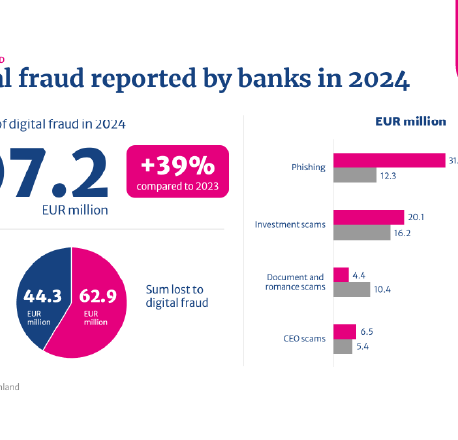
When fraudsters engage with their victims, penetrating the victim’s bank account is one of the very last stages. Before they get to this point, the fraudster must first gain contact with the victim, then get them to fall for the scam, and only then convince them to loosen their purse strings – or the security of their online bank account.
The design of fraud prevention measures is too often focused on tightening banks’ security measures or highlighting banks’ role and liability. It would also be important to control the channels through which fraudsters approach their victims in the first place.
The majority of consumers today have learned to exercise appropriate caution when it comes to calls or text messages from unknown numbers or other types of contact out of the blue. But the fraud process can also be something like this:
A consumer wants to sell their old mobile phone and creates an account on an online marketplace. Before long, a prospective buyer who seems interested and helpful makes contact and a deal is made. The savvy consumer knows not to send the item until they see the money on their bank account. But they also know that a buyer should not transfer the money until they have received the item. What to do?
The buyer offers a nifty solution to this dilemma, saying that the online marketplace uses a handy app that allows them to put the money in safe keeping until they have received the item and only then transfer the money to the seller. The seasoned buyer helps the novice seller by sending a link to an authentic-looking app store where the seller can download the app.
When the seller finds out what they actually downloaded was a piece of malware that allows the fraudster to gain access to their online bank, it is already too late to ask the bank to intercept the payments or block access to their account or cards.
======
In the last two and a half years, Finns have lost over €100 million to digital fraud.
======
In addition to online marketplaces, social media platforms also offer fraudsters easy access to potential victims. In the last two and a half years, Finns have lost over €100 million to digital fraud. Over the same period, banks have been able to stop and recover €65 million that was about to be transferred to criminals.
Finnish banks employ thousands of people in anti-money laundering and fraud prevention duties. But banks cannot prevent fraud on their own: to improve crime prevention, it is imperative to tackle fraud at the source.
In Finland, telecom operators already have an obligation to prevent caller ID spoofing and the transfer of scam calls to recipients. According to FiCom, an organisation lobbying for and promoting the interests of the ICT industry in Finland, the prevention of spoofing mobile phone numbers has prevented up to more than 200,000 scam calls per day.
Fraud prevention liability must be extended to cover not just banks and telecom operators but also social media platforms and online marketplaces. To effectively prevent fraud, all parties must be involved.
Still have questions?
|Contact the columnist
Looking for more?
Other articles on the topic

Finnish financial sector and authorities tested their ability to operate under severe disruptions and emergency conditions

Fraud must be tackled at the source – Social media platforms and online marketplaces need to be involved in fraud prevention

Volume of digital fraud skyrockets in Finland – Banks blocked more than €44 million’s worth of fraud-related payments in 2024

The Commission must tighten the screw on fraud prevention – Social media platforms and online marketplaces must also be involved




